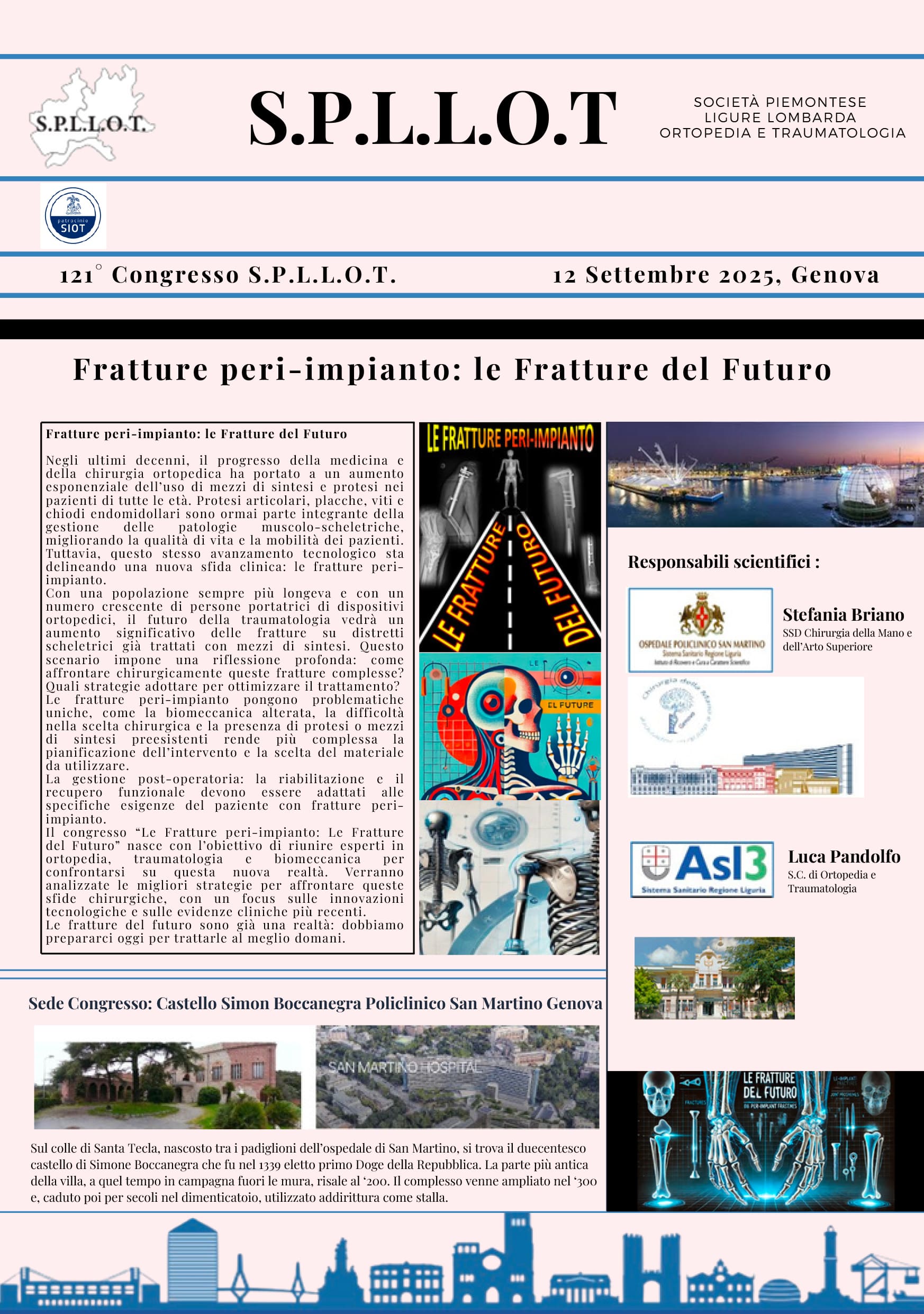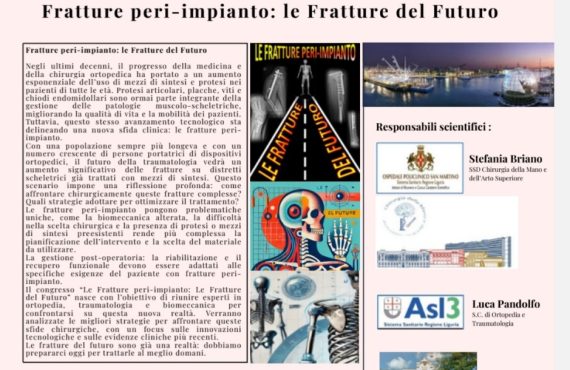
Durante il Congresso SPLLOT 2025 che si è svolto il 12 settembre a Genova è stato nominato Presidente SPLLOT il Prof. Danilo Chiapale per gli anni 2026-2027 , che subentrerà al Prof. Alessandro Aprato dal 1° gennaio 2026.
Nel settembre 2027, durante il Congresso SPLLOT di Novara, verrà eletto il nuovo Presidente 2028-2029 ed eletti i Consiglieri.
( Può ricoprire la carica di Presidente o di Consigliere quel Socio che sia stato già iscritto alla SPLLOT – articolo n. 7 ed articolo 5 del Regolamento ).
CONGRESSO SPLLOT
NEWS IN EVIDENZA
CONGRESSO SPLLOT
NEWS IN EVIDENZA
 Durante il Congresso SPLLOT 2025 che si è svolto il 12 settembre a Genova è stato nominato Presidente SPLLOT il Prof. Danilo Chiapale (che sostituirà alla Presidenza il Prof. Aprato dal 1° gennaio 2026) per gli anni 2026 e 2027 . (Nella foto il Presidente Prof. Alessandro Aprato)
Durante il Congresso SPLLOT 2025 che si è svolto il 12 settembre a Genova è stato nominato Presidente SPLLOT il Prof. Danilo Chiapale (che sostituirà alla Presidenza il Prof. Aprato dal 1° gennaio 2026) per gli anni 2026 e 2027 . (Nella foto il Presidente Prof. Alessandro Aprato)
Nel settembre 2027, durante il Congresso SPLLOT di Novara, verrà eletto il nuovo Presidente 2028-2029.
( Può ricoprire la carica di Presidente o di Consigliere quel Socio che sia stato già iscritto alla SPLLOT – articolo n. 7 ed articolo 5 del Regolamento ).
COME SOPRAVVIVERE IN PRONTO SOCCORSO Iscrizione via mail: cosetta.ruggiero@minervamedica.it Costo d’iscrizione 30 Euro tramite bonifico bancario intestato a: SPLLOT Corso Bramante 83 Torino BANCA INTESA SANPAOLO, IBAN IT77T0306909606100000116044 L’iscrizione da il diritto a partecipare a TUTTI i Corsi Pratici della SPLLOT, a ricevere (omaggio per













